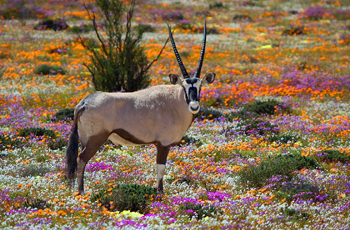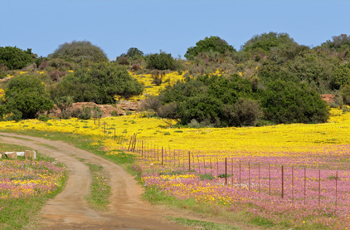The phenomenon of South Africa’s west coast wildflowers occurs each spring (Aug - Sep) when the arid, dusty earth of South Africa’s west coast bursts into fields of colourful flowers. White, purple, pink, red, and flaming oranges create a tapestry of colour to create an annual phenomenon worth seeing. Fybos, vygies, daisies, and nemesias are some of the hundreds of indigenous species that burst into bloom along South Africa’s western coast each spring. It is hardly surprising that thousands of visitors enjoy tours to the area between August and September each year to take photographs and marvel at this natural wonder.
.jpg)
The timing and amount of spring rainfall as well as the absence of warm berg winds determine the duration of the flower season, the amount of flowers, and the quality of the flowers. While the last two weeks of August through to mid-September are regarded as the best times to do a tour to view the wildflowers, early rains can see flowers blooming as early as July. Good weather conditions (not too hot) allow the land to hold onto the flowers into October. The variety of flowers on display and flower hot spots differ each year, varying according to the weather conditions. Tourist information centres in the region know the best locations and will gladly point you in the right direction. Use the West Coast Tourism website too for their ‘Flower Reports’.
The wildflowers can be enjoyed through self-drive tours, on bicycle routes, or walks within National Parks and nature reserves. Tourist information offices in the region provide maps of flower routes so that you can plan a journey to flower hot spots through quaint towns. One and two-day walking trails allow you to get close to the flowers - ideal for photographers and flower enthusiasts. Always stay on the trails and never remove plants, blubs, or flowers from the veld (it is illegal to do so!).




